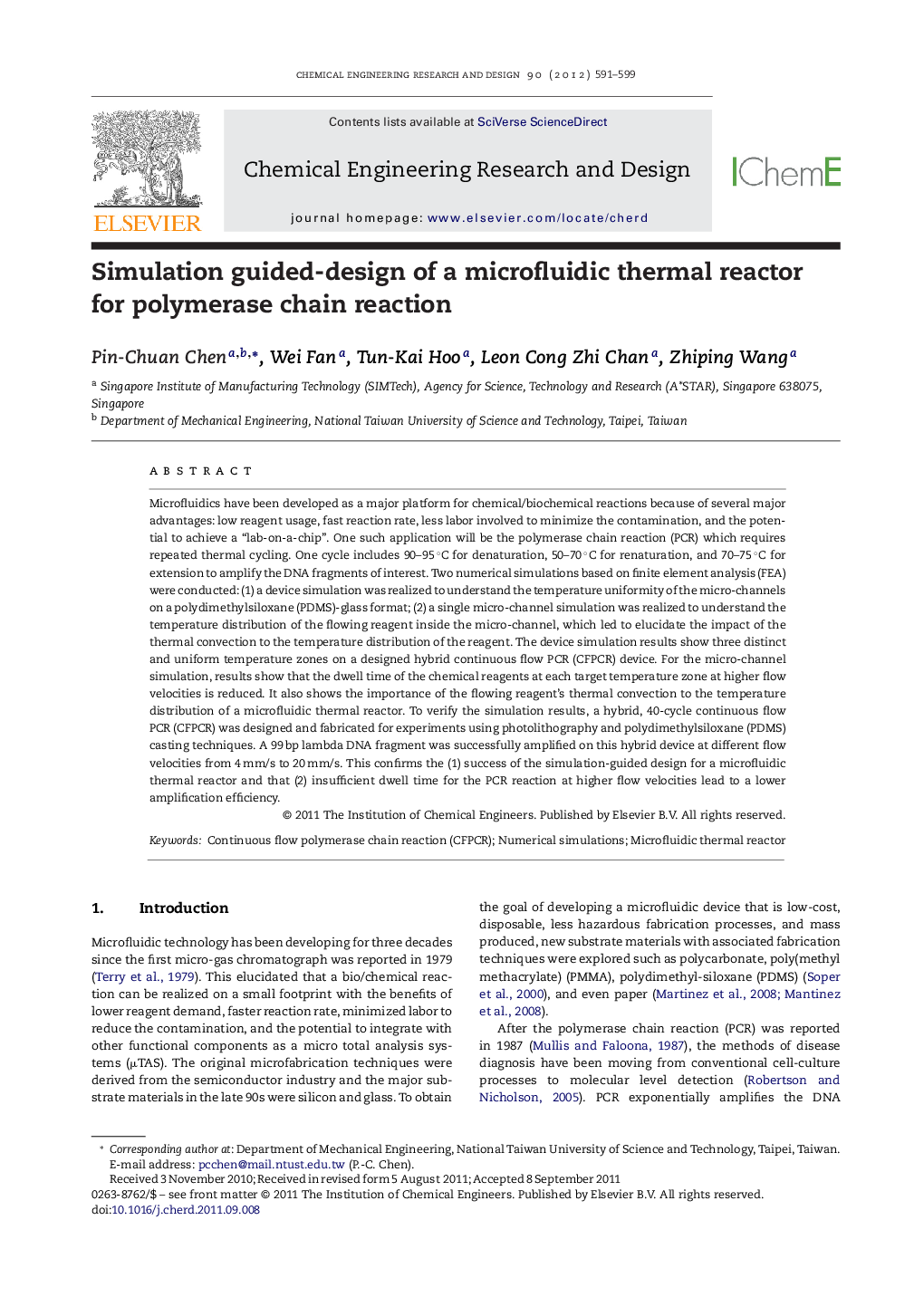| کد مقاله | کد نشریه | سال انتشار | مقاله انگلیسی | نسخه تمام متن |
|---|---|---|---|---|
| 621910 | 882588 | 2012 | 9 صفحه PDF | دانلود رایگان |

Microfluidics have been developed as a major platform for chemical/biochemical reactions because of several major advantages: low reagent usage, fast reaction rate, less labor involved to minimize the contamination, and the potential to achieve a “lab-on-a-chip”. One such application will be the polymerase chain reaction (PCR) which requires repeated thermal cycling. One cycle includes 90–95 °C for denaturation, 50–70 °C for renaturation, and 70–75 °C for extension to amplify the DNA fragments of interest. Two numerical simulations based on finite element analysis (FEA) were conducted: (1) a device simulation was realized to understand the temperature uniformity of the micro-channels on a polydimethylsiloxane (PDMS)-glass format; (2) a single micro-channel simulation was realized to understand the temperature distribution of the flowing reagent inside the micro-channel, which led to elucidate the impact of the thermal convection to the temperature distribution of the reagent. The device simulation results show three distinct and uniform temperature zones on a designed hybrid continuous flow PCR (CFPCR) device. For the micro-channel simulation, results show that the dwell time of the chemical reagents at each target temperature zone at higher flow velocities is reduced. It also shows the importance of the flowing reagent's thermal convection to the temperature distribution of a microfluidic thermal reactor. To verify the simulation results, a hybrid, 40-cycle continuous flow PCR (CFPCR) was designed and fabricated for experiments using photolithography and polydimethylsiloxane (PDMS) casting techniques. A 99 bp lambda DNA fragment was successfully amplified on this hybrid device at different flow velocities from 4 mm/s to 20 mm/s. This confirms the (1) success of the simulation-guided design for a microfluidic thermal reactor and that (2) insufficient dwell time for the PCR reaction at higher flow velocities lead to a lower amplification efficiency.
► We used numerical simulation to help design a microfluidic thermal reactor.
► We studied the temperature distribution of the overall PDMS-glass device as well as in the microchannel.
► When flow velocity of reagent increased, the efficiency of amplifying DNA fragment decreased.
► Due to the side cooling of the microfluidic device, only the central area is good for reaction of DNA amplification.
Journal: Chemical Engineering Research and Design - Volume 90, Issue 5, May 2012, Pages 591–599